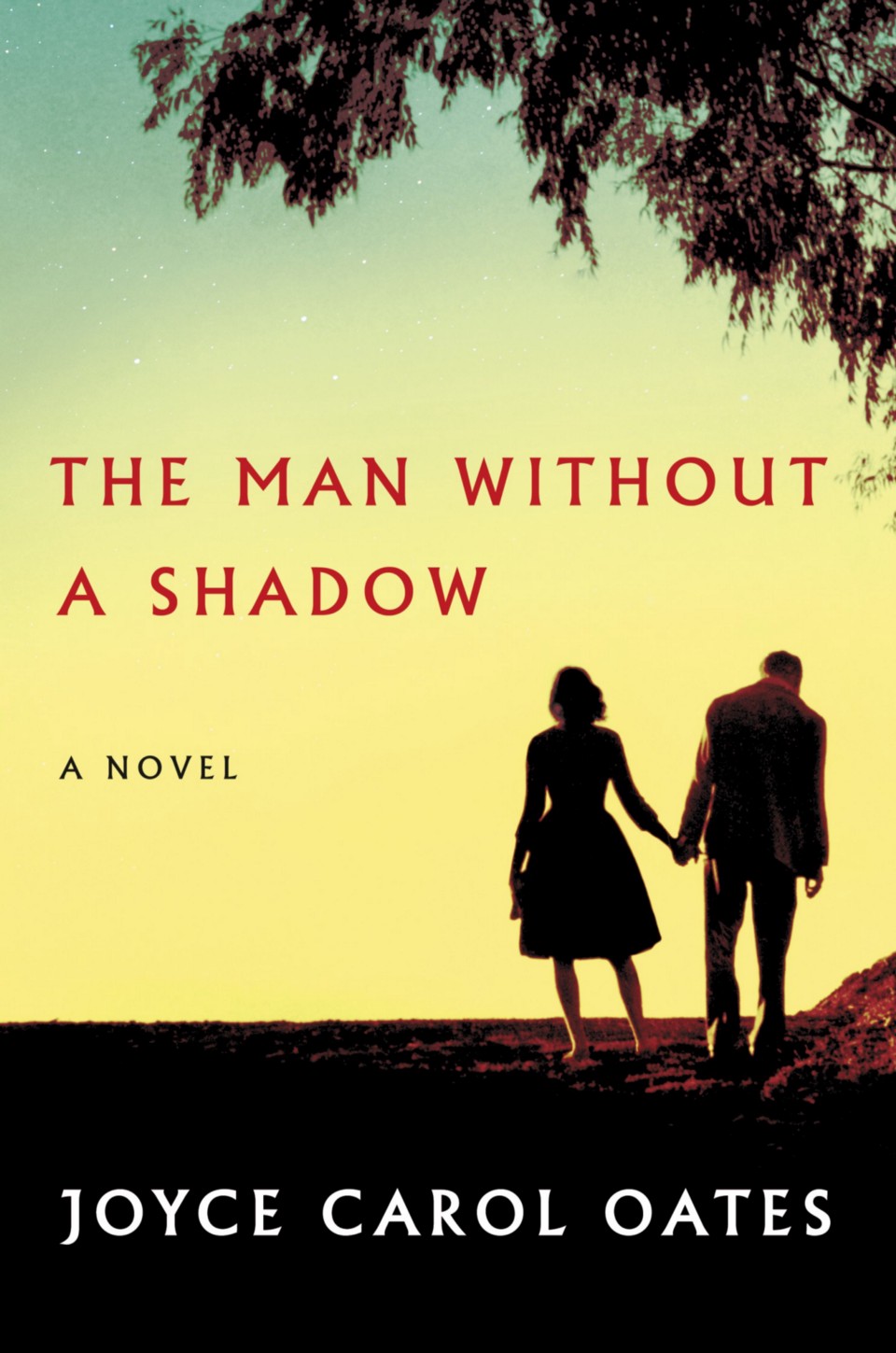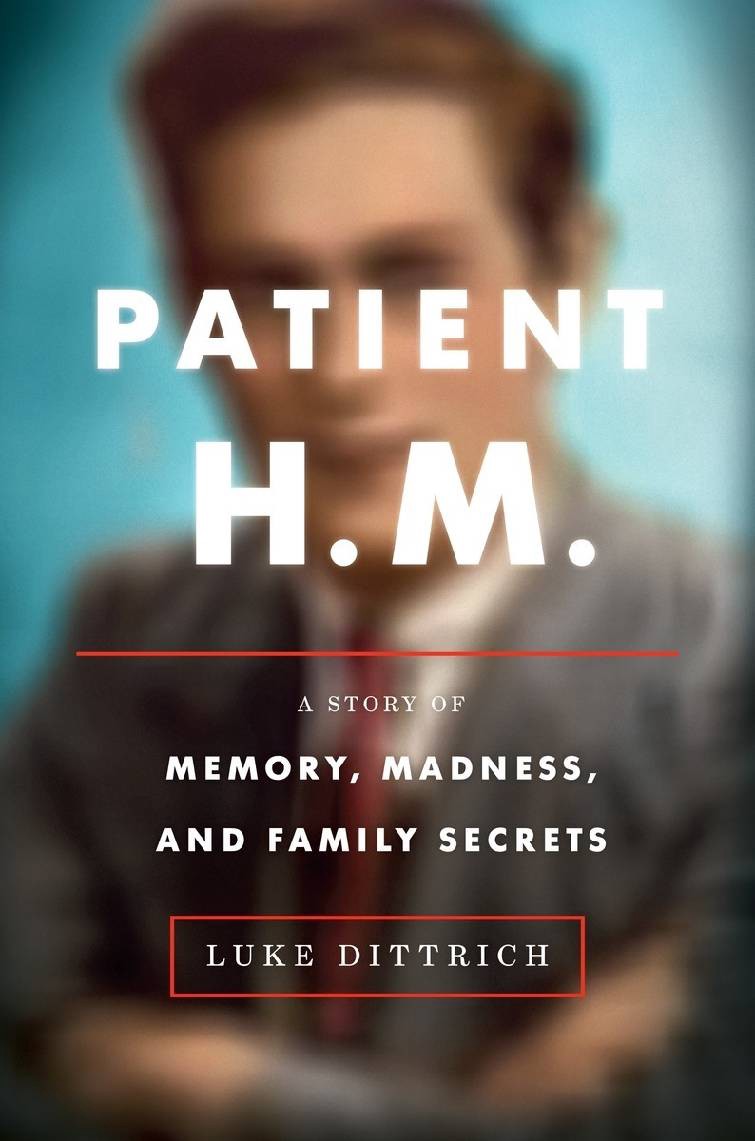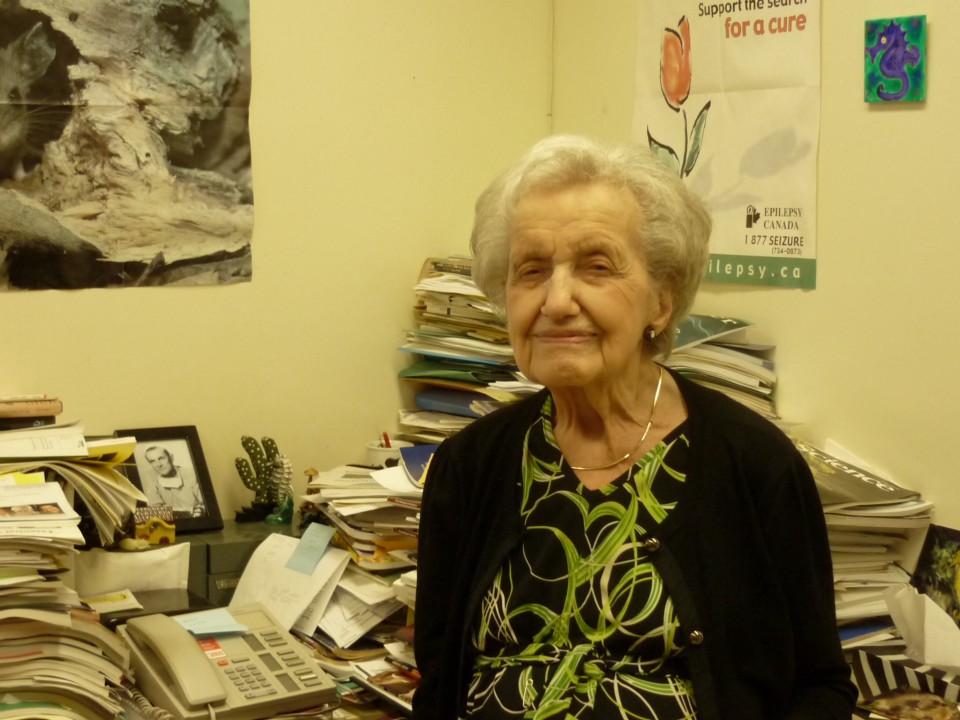Of the many experts who figured in Henry Molaison’s life, one man would change him into amnesiac patient H.M., but two women ensured he would never be forgotten.
By Louise Fabiani
Henry Molaison. (Photo: Wikimedia Commons)
Two one-way avenues sandwich the medical and life science buildings on McGill University’s main campus. The lower one is named after Dr. Wilder Penfield, an illustrious United States-born neurosurgeon and scientist who died in 1976. During my undergraduate years in biology, my classmates and I jaywalked that busy street many times. I only learned the story behind avenue Docteur-Penfield when I developed an obsession with neuroscience midway through my program. I could hardly have been better placed to indulge what would prove to be a lifelong sidebar to my formal study of ecology and environmental ethics: One of the world’s preeminent centers for the study of the human brain, founded by Penfield himself, happens to be a 15-minute walk along the street bearing his name. Since then, I have visited the Montreal Neurological Institute and Hospital (the “Neuro”) often, for lectures and presentations, and briefly worked there in the publicity department.
It is at the Neuro, in a tiny office decorated with pictures of seahorses, that I had a very lively discussion with Penfield’s most famous student, Dr. Brenda Milner, a week after her 98th birthday in July.
Milner was a bilingual British émigrée with a background in math and physics before she turned to the study of psychology. In the mid-1940s, she and her Canadian husband at the time, Peter Milner, moved to Montreal. She taught psychology at a French-speaking university for a few years before making her way to McGill, where she met Penfield.
Penfield specialized in helping epileptics. Together with colleague Dr. Herbert Jasper, he designed the famous Montreal Procedure, which proved highly effective for treating temporal-lobe epilepsy. Patients were kept awake during surgery (the brain itself cannot feel pain), their anesthetized skulls open. With an electrode, Penfield would stimulate the brain, a tiny spot at a time; the patient would report or demonstrate the results (the most famous example being “I smell burnt toast”). When Penfield found the exact origin of their seizures, that’s the only part he would excise. Over time, he was able to map the different functional regions of the cortex, and even some underlying structures.
Success exacted a terrible price: The man’s ability to set down new memories was gone. Scoville had created a person who lived entirely in the now.
Penfield was a wary surgeon. He desperately needed that map — all neurosurgeons did. Language regions, vision, hearing, smell: They were all worth preserving intact, of course, but of particular concern for Penfield was memory. He had seen the devastating consequences of amnesia in various forms. In 1950, he called upon Brenda Milner to study two former epileptics who had lost their memory entirely following operations. These patients were Milner’s introduction to the house of memory.
Around this time, south of the Canadian border, an epileptic came to the attention of another famous neurosurgeon. The patient was a bright, affable 27-year-old man who could barely function in everyday life, owing to the frequency of his petit mal and grand mal seizures. His parents consulted the famous neurosurgeon Dr. William Beecher Scoville, who worked at the Institute of Living, in Hartford, Connecticut.
Scoville operated on the son. The seizures abated. But success exacted a terrible price: The man’s ability to set down new memories was gone. Scoville had created a person who lived entirely in the now.
This amnesiac, Henry Molaison, for nearly 60 years known only by his initials, H.M., became Milner’s most famous subject, although, thanks in part to the distance between Montreal and Connecticut, her research time with him was relatively short. Her work and that of the students who were to take over from her launched the work of countless others and would contribute immeasurably to neuroscience.
In fact, H.M. became the most studied human being who ever lived. Milner’s early findings, born of her intensely curious and innovative mind, ensured a place for this milestone in the history of medicine.
The story of H.M. can be drawn as a tree. The trunk is Scoville, the surgeon who boldly plunged into H.M.’s brain and broke his ability to remember. Two limbs are Milner (at the Neuro) and her former student, Suzanne Corkin (at the Massachusetts Institute of Technology). A top branch represents Jacopo Annese, the University of California–San Diego researcher who acquired H.M.’s brain almost immediately post mortem (in 2008). Nearly 100 other researchers who tested H.M. through the years make up the smaller branches.
Two very different books published in 2016 — coincidentally, the year Corkin died, aged 79 — explore that tree in curiously similar ways.

The Man Without a Shadow. (Photo: HarperCollins)
Joyce Carol Oates’ novel The Man Without a Shadow, although not explicitly a work of biographical fiction, clearly draws upon H.M.’s long period with Corkin. Through her quasi-gothic lens, the author — whose second husband is a neurologist — takes the story of a gentle, damaged man and the woman who studies him, and spins it into a romance.
Patient H.M.:A Story of Memory, Madness, and Family Secrets is journalist Luke Dittrich’s first book. It grew out of a piece about the amnesiac for Esquire. This exhaustive work of investigative reporting employs many novelistic devices — including cliffhanger chapter endings and richly drawn characters — that a story of this intrinsic fascination does not really require. Nevertheless, it makes for a gripping read. Dittrich seems drawn to expand upon the drama, to put his own stamp upon it, and there is a good reason why. Scoville was Dittrich’s grandfather, and Corkin lived across the street from the surgeon as a child. Dittrich’s mother was Corkin’s best friend from childhood to adulthood.
Barely into the first chapter, we see that Dittrich has come not to praise Caesar but to bury him. His grandfather comes across as a lover of fast foreign cars who was equally fond of excitement in the operating room. In Dittrich’s rendering, Scoville could hardly be more different from Penfield, who tended always to err on the side of caution. Figuratively speaking, Scoville liked playing darts blindfolded.
Yet despite this apparent cavalier attitude in the operating room, Scoville and many of his fellow psychosurgeons (as they were called) believed they were doing a favor to unhappy, anxious patients, their distressed families, and the community by performing procedures like lobotomies. There was pressure to reduce the population of overflowing asylums. Needless to say, what constituted mental illness in this period was entirely subjective. Patients, the vast majority of them women, emerged from surgery docile, passive, and easily controlled, no longer “difficult.” They could be released from care.
How could a man with a short-term memory of 70 seconds improve at anything? The answer: Another kind of memory must exist, on the unconscious level.
Each day, Scoville would perform dozens of operations that were, in essence, experiments. Dittrich implicitly blames him for essentially killing Henry Molaison, the human being, and creating H.M. in his place.
Dittrich packs 400 pages with the history of brain surgery — going back to ancient Egypt — and many personal digressions, some of which do add to the story. But his main goal seems to be the vindication of Henry as the victim of an ego-bound, scalpel-wielding risk-taker. In addition, Dittrich all but accuses his grandfather of turning his first wife (Dittrich’s maternal grandmother) into another victim. This is a talented journalist whose agenda extends beyond mere reportage.

Patient H.M.: A Story of Memory, Madness, and Family Secrets. (Image: Penguin Random House)
His grandfather isn’t the only figure to come under Dittrich’s intense scrutiny. Drawing upon reports from former co-workers and so on, he makes Corkin sound strangely possessive of the man she studied for nearly 45 years — and of the data she amassed from him. For example, a colleague accused her of “data hoarding” key insights into H.M.’s capacities, and sent a complaint to the American Psychological Association. Shortly after H.M.’s death, Corkin engaged in a bi-coastal legal skirmish with Jacopo Annese over the rights to Henry’s brain. Annese had meticulously sectioned it at his San Diego lab and made a 3-D computer model from the results — a monumental task of inestimable value to researchers all over the world. And he put it on the Internet, for all to see and use. Corkin eventually won. Dittrich makes his feelings clear on these disputes: The outcomes would have been entirely different had Corkin’s ego figured far less in the proceedings.
Oates evidently had access to some of the same reports as Dittrich (and the freedom of fiction in which to explore them). Her novel’s protagonist — Martha Sharpe — builds a virtual fortress around the amnesiac she studies, and is roundly criticized for being “some kind of fanatic.” Martha’s motives, however, are not simply born of academic zeal. They are dangerously, unethically personal. Researcher and amnesiac subject engage in clandestine sex several times — to his mind, each occasion a one-night stand. This approaches pure fantasy; by all accounts, H.M. was asexual. (Milner, predictably, scoffed when I told her about the book’s daring premise. “You’re not going to fall in love with an amnesiac patient. I don’t think anybody is.” Unless, she added, you’re “a masochist.” She was not referring to the sexual side of the relationship.) Why does Oates insert this unrealistic complication? Perhaps she is wryly commenting on the general nature of male-female sexual dynamics: that men tend to forget what women hold precious; that women are the long-term custodians of any relationship, while men take things a day at a time. What better (if slightly risible) symbol than a male amnesiac? (Milner responded to my fanciful exegesis with a long, pensive silence — which it probably deserved.)
It is hard to read about memory loss without thinking how we, too, would feel if a major part of who are suddenly vanished. Oates makes plausible use of these questions of identity, how who we are feels intimately tied with what we can or cannot remember. She has Martha muse on this:
“How do we know who we were, if we don’t know who we are?
“How do we know who we are, if we don’t know who we were?”
When I read this to Milner, I was a little taken aback by her response to what I thought was a bit of clever phrasing. “[Amnesiacs] know very well who they are,” she said. They know all about their early lives, even if, post-operatively, they suffered a touch of retrograde memory loss. “The rest is not affected at all.” They remember their childhoods, and other formative events. It is wrong to see them as completely transformed by amnesia. For one thing, they still love to tell stories (even if they tell the same handful ad infinitum). “They don’t change their personalities, you know.”
I first interviewed Milner back in 2002. She was (and is) very personable and effusive. We easily made each other laugh. We talked about H.M., of course. He was still very much alive 14 years ago (though, as I was to learn much later, he was suffering from dementia). She loved to talk about him. She still does. Her greatest achievement has been her work on memory, on him.
The great irony is that this invaluable insight would have been impossible without the preventable tragedy at its center.
Everyone knew H.M. suffered anterograde amnesia, meaning that he could not form any new memories. (Retrograde is when you cannot recall any old memories.) Thanks to H.M., Milner made two career-defining discoveries. The first pertained to episodic memory, familiar to everyone as the ability to relive past experiences. It is localized in the hippocampus (Greek for “seahorse”). The second insight came about when she had H.M. trace a figure in a mirror — she found that he actually did it more quickly after multiple attempts. He could learn. Learning, of course, is contingent on memory. How could a man with a short-term memory of 70 seconds improve at anything? The answer: Another kind of memory must exist, on the unconscious level.
As a graduate student at McGill in the early 1960s, Corkin also tested H.M. (there on a brief visit with his mother) with a motor task, and reinforced her supervisor’s findings. Dittrich reports that Corkin showed H.M.’s “intact procedural memory and his demolished episodic memory simultaneously. For the first time … [his] strengths and [his] weaknesses were both laid bare.”
While much remains to be learned about the brain, and about memory, we’ve made huge strides since the 1960s — more, I dare say, than in the previous dozen centuries. We owe those women and H.M. a huge debt of gratitude.

Dr. Brenda Milner. (Photo: Louise Fabiani)
The great irony is that this invaluable insight would have been impossible without the preventable tragedy at its center. Yes, Scoville’s trespass into Henry’s brain stopped his terrible seizures, but the overconfident surgeon caused irreparable, unnecessary harm. He vacuumed out structures on both sides of the brain. (Penfield always worked unilaterally, to leave a “back-up.”) No surgeon in his right mind would remove both kidneys or both lungs, but Scoville virtually obliterated both hippocampi — with impunity.
We can, if we choose, cite historical revisionism to forgive the horror-story antics of psychosurgeons because it was acceptable at the time. But the 1940s and ’50s were not the Dark Ages; procedures like lobotomies did not stop until the 1970s. Psychosurgery, as Dittrich (and others) point out, was just another tool for forcing people to conform to a strict set of norms, usually set by straight white males of the middle or upper classes. This pernicious need for control belongs in the same category as the Nazi yearning for racial purity. We can no more excuse the psychosurgeons’ practices as mere products of their age than we can dismiss the others.
It is easy to see how a novelist would find this story irresistible. It is also understandable that a journalist, with or without ties to the main players, would want to track down facts he suspects to have been suppressed or even destroyed. There is so much to the plight of Henry Molaison that makes the immortality of his successor, H.M., almost inevitable.
“Scoville was doing these radical operations,” Milner reminded me, but amnesiacs “were not being studied at all until Penfield and I reported our two cases, and then [Scoville] realized how important they were.” So much groundbreaking work on the human brain has depended on people like Milner and Scoville being insightful — at the right time — with patients like Henry Molaison.
We have not heard the last of him. The man who could not remember will not be forgotten.




